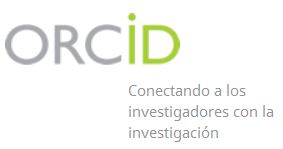Caracterización de la intubación traqueal con el videolaringoscopio VALOR en pacientes con vía aérea difícil
Palabras clave:
manejo de la vía aérea, intubación intratraqueal, laringoscopía, laringoscopios.Resumen
Introducción: La videolaringoscopía constituye el procedimiento de referencia para el manejo de la vía aérea difícil; sin embargo, los costos económicos de los videolaringoscopios comerciales resultan prohibitivos para su adquisición y generalización en naciones de bajos y medianos ingresos.
Objetivo: Caracterizar la intubación traqueal con el videolaringoscopio VALOR en pacientes quirúrgicos con vía aérea difícil.
Métodos: Se realizó un estudio observacional, descriptivo, longitudinal prospectivo, donde se empleó el videolaringoscopio VALOR en 36 pacientes quirúrgicos con signos predictores de vía aérea difícil. El estudio se desarrolló en el Servicio de Anestesiología y Reanimación del Complejo Científico Ortopédico Internacional Frank País, en el período de septiembre de 2022 a enero de 2024.
Resultados: Se realizó la intubación traqueal efectiva a todos los pacientes en un tiempo promedio de 49 segundos. El 94,4 % de los pacientes requirió un solo intento de intubación con una visión adecuada de la glotis según las escalas VIDIAC y VCI. El 47 % de la muestra fueron pacientes con patologías de la columna cervical. Como eventos adversos se registraron la taquicardia refleja (19,4 %) y traumatismo faríngeo leve (2,8 %), sin implicaciones perioperatorias. Predominaron las maniobras de manipulación laríngea externa (61,1 %), uso de bougie (91,7 %), lifting indirecto de epiglotis (80,6 %), con paridad entre las espátulas Macintosh (52,8 %) e hiperangulada (47,2 %).
Conclusiones: El videolaringoscopio VALOR favoreció la intubación traqueal efectiva en el primer intento en pacientes con signos predictores de vía aérea difícil, en un tiempo breve, con una visualización óptima de la glotis y una baja incidencia de eventos adversos.
Descargas
Descargas
Publicado
Cómo citar
Número
Sección
Licencia
Aquellos autores/as que tengan publicaciones con esta revista, aceptan los términos siguientes:- Conservarán sus derechos de autor y garantizarán a la revista el derecho de la primera publicación de su obra.
- Todo el contenido de la revista, se encuentra bajo una licencia https://creativecommons.org/licenses/by-nc/4.0/deed.es_ES.
Se permite y recomienda a los autores a depositar sus manuscritos en servidores preprints reconocidos, y a depositar sus bases de datos en servidores creados para tales efectos.




 Sociedad Cubana de Anestesiología y Reanimación (SCAR)
Sociedad Cubana de Anestesiología y Reanimación (SCAR) 

